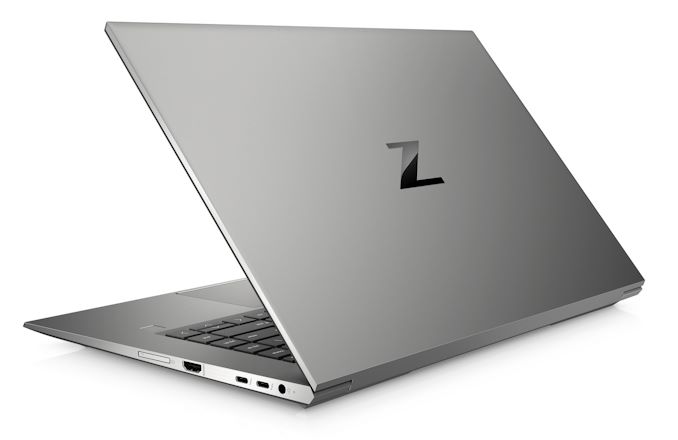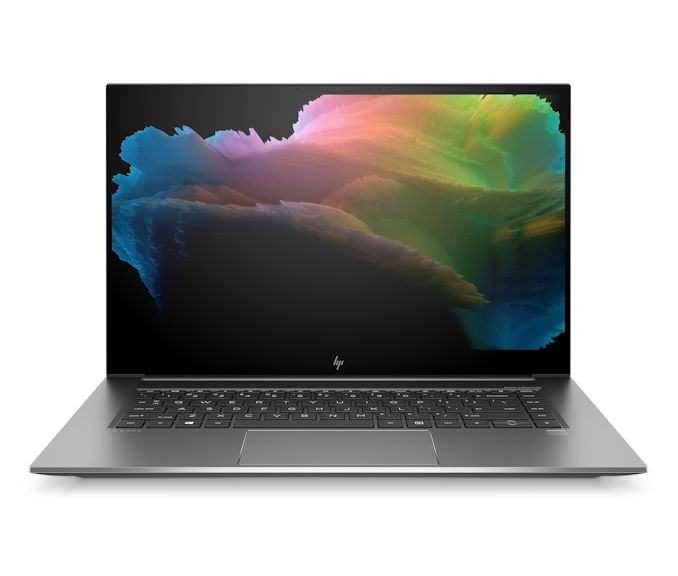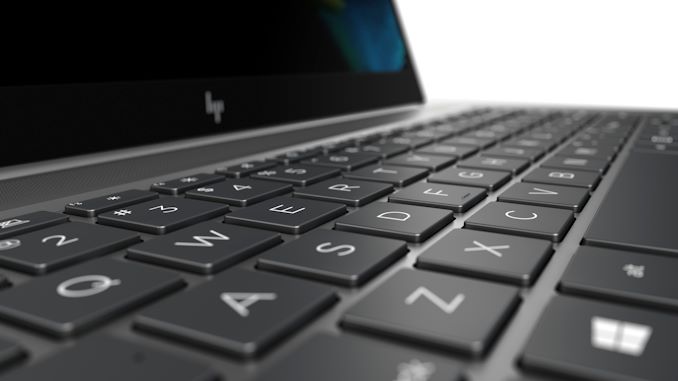HP Announces ZBook Studio And ZBook Create Notebooks: Targeting The Top
by Brett Howse on April 16, 2020 8:00 AM EST
HP has announced the new ZBook Studio and ZBook Create notebooks today, along with their ENVY refresh. The HP Envy 15 announced today targets creators and prosumers, but the ZBook steps up a notch, aiming at the prosumer and professional market where features like Quadro graphics and Xeon processors transition are necessary.
The HP Zbook Create and Studio are the same notebook, but the Studio offers NVIDIA Quadro, up to the Quadro RTX 5000, whereas the Create model is stuck with “only” RTX 2080 Super graphics, and both feature the NVIDIA Studio drivers. HP hasn’t released all of the specifications yet, but they will offer up to Core i9 or Xeon CPUs as well. These will be true mobile workstation level devices, and offer MIL-STD tested CNC aluminum chassis to go along with them.
HP is bringing the first DreamColor display to their notebook lineup with these 15.6-inch models. There is a UHD DreamColor HDR-400 display with Pantone validation and 10-bit color , with 100% P3, along with sRGB and Adobe RGB modes. For those that need even more contrast, HP also has an HDR-500 OLED display that is also UHD resolution.
The notebook itself, despite the power packed in, is 22% smaller than previous designs and offers an 87% screen-to-body ratio. Despite the small size, HP’s Z Predictive Fan Algorithm and new vapor cooling chamber, coupled with the Z Power Slider, allows the user to choose the cooling requirements for their workload.
All this performance still comes with great battery life, with HP rating the new ZBook at up to 17.5 hours of battery. Clearly this rating will not be with the GPU powering through a workload, but is impressive nonetheless.
The new ZBook Studio and ZBook Create will be available in August, with pricing to be announced closer to that date.












27 Comments
View All Comments
GreenMeters - Thursday, April 16, 2020 - link
If they're targeting the top, where's the Ryzen 4000 option?Xajel - Thursday, April 16, 2020 - link
ZBook line has been an intel design from the beginning, upgrading to newer intel is easy even though they redesigned the laptop this year, the original design was still intel, including motherboard, cooling, etc.. Upgrading to newer intel CPU is easy for them. But moving to Ryzen will take more time, and some design and engineering ideas might be patented also to Intel and can't be used in AMD. Some designs also could be NVIDIA's and they have yet to design a Ryzen 4000 version of their platform.Operandi - Thursday, April 16, 2020 - link
So it should be "targeted the top" then.close - Thursday, April 16, 2020 - link
There's nothing intrinsically "Intel" to the Z line and nothing stopping them from using AMD or launching an AMD equivalent under a different series. And HP already has Ryzen 3000 based offerings but all lower end devices. Introducing a high end AMD system right now would shoot any Xeon offering in both feet. HP is just being a good pal with Intel, it's not as if it's the first time they do it.fatcatproductions - Thursday, April 16, 2020 - link
If they are targeting creative professionals, and video producers like myself, having the Thunderbolt 3 is crucial to a lot of external devices that I utilize. I would love to test out some Ryzen laptops but the need for TB3 drives my decisions more than anything else at this point.caqde - Thursday, April 16, 2020 - link
There is no technical reason for a Ryzen notebook not being able to have Thunderbolt ports. There are Ryzen motherboards that have Thunderbolt built in (Asrock X570 Create and Phantom Gaming ITX boards). So Intel in not needed for a Notebook featuring Thunderbolt 3. This is all in how they design the motherboard.BillyONeal - Thursday, April 16, 2020 - link
The technical reason is that Ice Lake comes with a TB controller for free.close - Thursday, April 16, 2020 - link
Since when is saving a couple of bucks a "technical" reason, Billy? Why not just slap on a Celeron instead of that Xeon then? Seems exactly like the kind of laptop they'd skimp on. I mean it's not like the series usually starts at ~$3000 and tops out at about $10000 (!!), or $6500 with end of sales rebates. Tell me more about the "technical" reasons of saving a buck on a $10000 laptop...eastcoast_pete - Sunday, April 19, 2020 - link
Which, ironically enough, is often not implemented by the notebook manufacturers. This and similar "pro" machines and MacBooks being the exception. As for the other Ice Lake machines, how much extra cost does adding a TB port really add? Any estimates?close - Monday, April 20, 2020 - link
@eastcoast_pete: The recommended price for a series 7 dual TB3 host controller from Intel is a whole $9. This is just the controller.Now the whole thing adds quite a bit extra via increased PCB complexity varying with what features are implemented exactly, additional ICs, cost of the connectors themselves, etc. Maybe not worth it for a $600-$1000 laptop, where margins are a lot thinner and buyers likely don't care about TB.
On a $3000-$10000 laptop this amounts to pretty much nil, and the PCB complexity is already there. It's just the extra $9 TB controller. Billy's excuse of "technical reason is to save money" is as ignorant and uninformed as it is inaccurate. HP may be saving money but they're doing it via the same old tricks of having a deal with Intel.